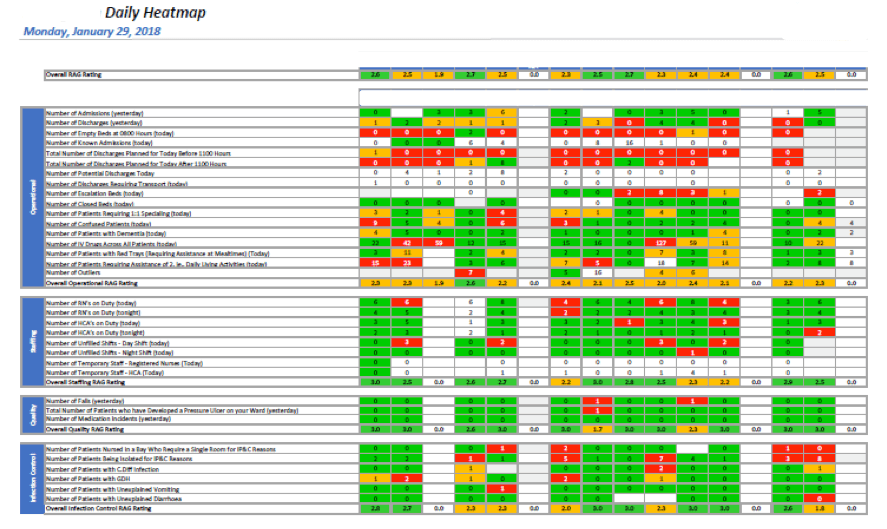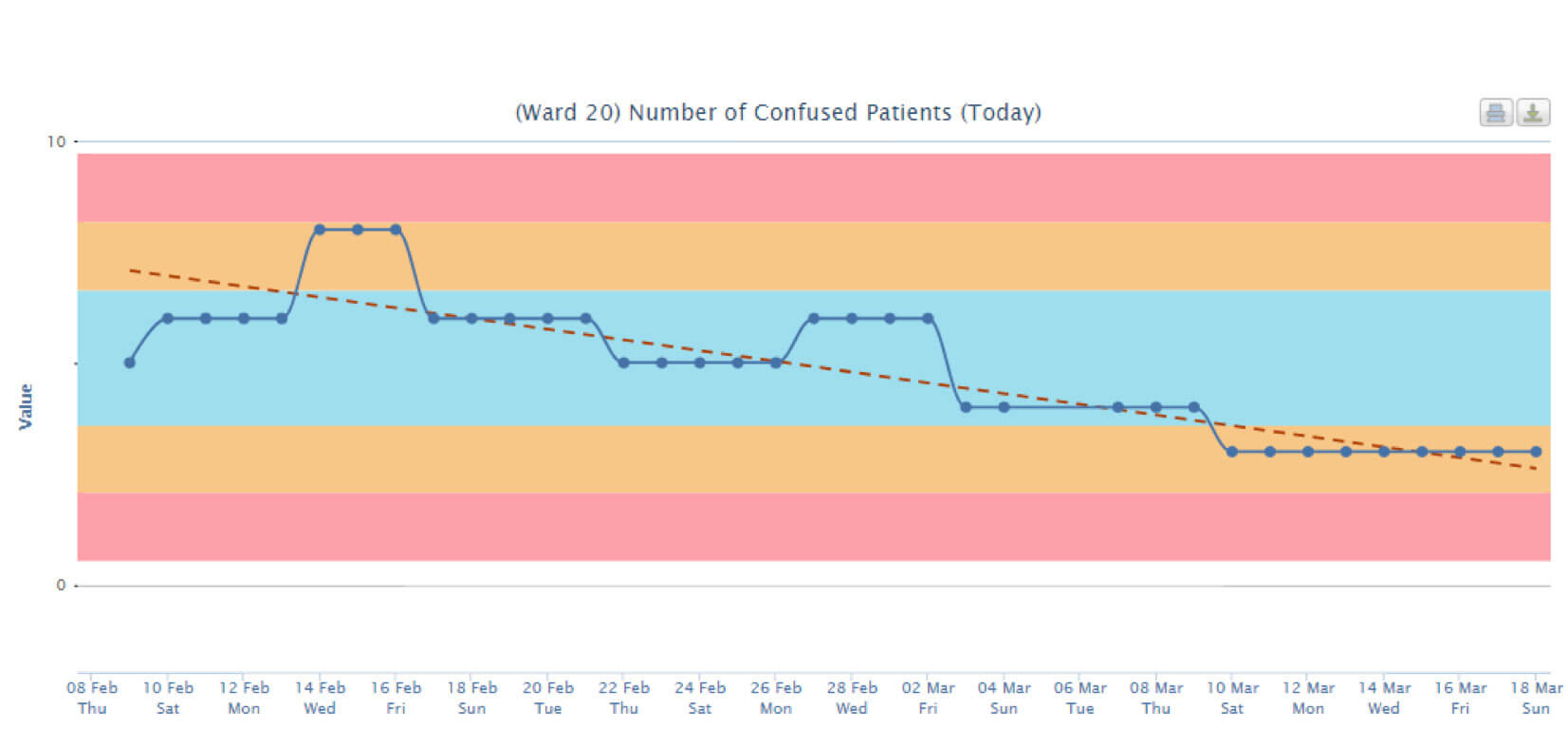People: Improving collection and use of ward level data in the 4th quarter of 2017/2018
The problem
Poor ward level data on quality and safety to support the patient flow information. All understanding regarding quality of care was retrospective and after the patient had suffered harm.
What we did
- Alamac supported all wards (including those at non-acute sites) to input information about factors such as patient acuity and dependency, staffing numbers, shortfalls and skill mix, and quality and safety issues.
- Produced a daily “heatmap” to support patient flow enabling lead nurses and managers make better decisions about management of the whole hospital.
- Enabled lead nurses and managers to support wards with problems “in the day” rather than looking at the problem and impact after patient quality had reduced or harm had occurred.
What we achieved
By providing daily information and support to interpret and use it, we facilitated improvement in a range of ways:
- Individual teams learnt to predict changes needed rather than act on failures in performance
- Comparing information on wards has led to improvement through competition between wards
- Sharing improvements between wards …sharing good practice, reduces errors as wards learn from each other and which reduces cost of patient care
- Tailored presentation of information to individual wards increased the ownership of the data and the issues and moved them away from historical generic approach where few individuals and teams owned their information
- Daily “Heat maps” pin point where pressure is and where effort needs to be focused by the whole organisation which improves results, reduces cost and increases motivation and morale as effort = results for management teams
- Reduction of high levels of nursing time used to manage medicines, particularly IV’s, with pharmacy capacity, used instead releasing nursing time for nursing only care with improved outcomes

